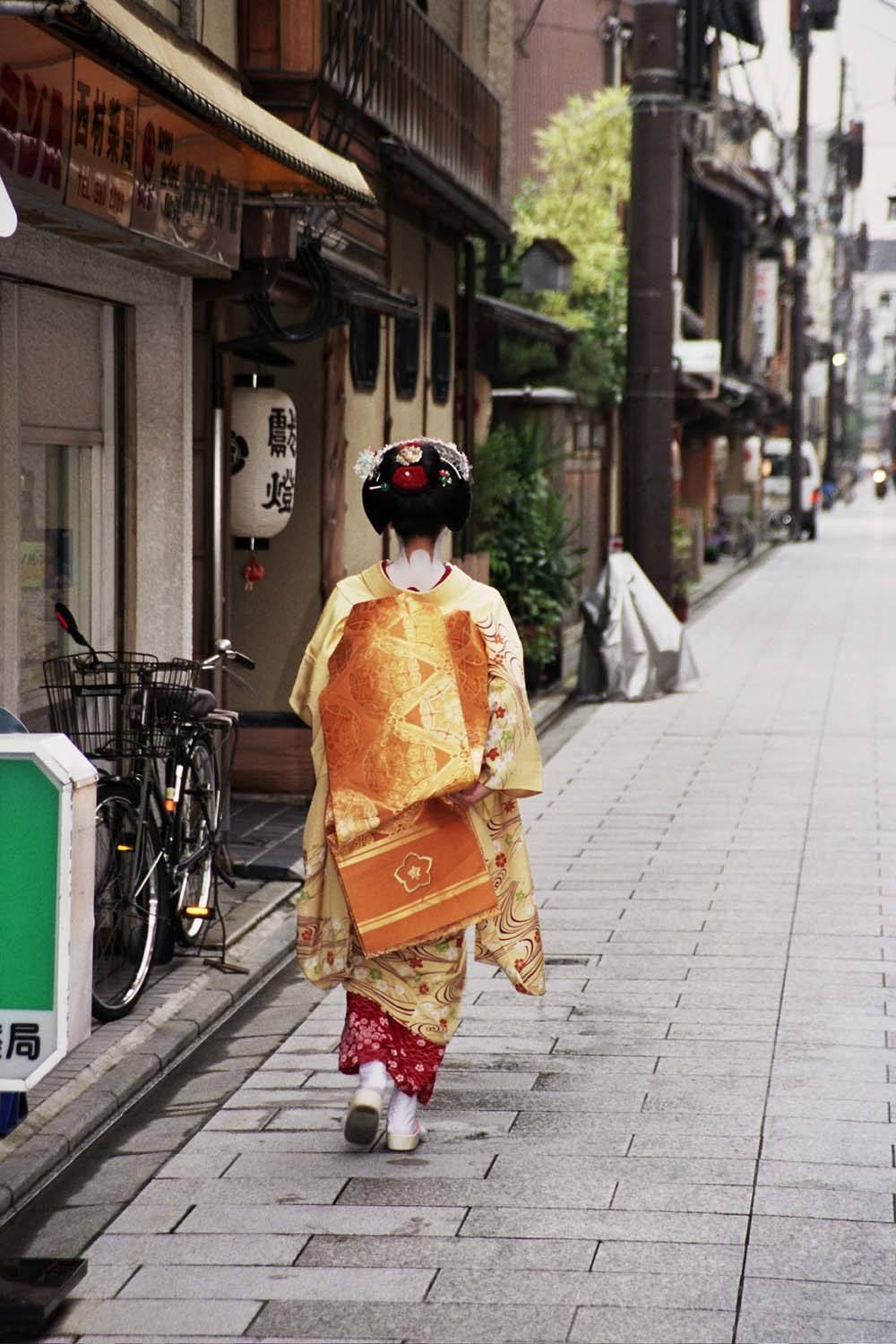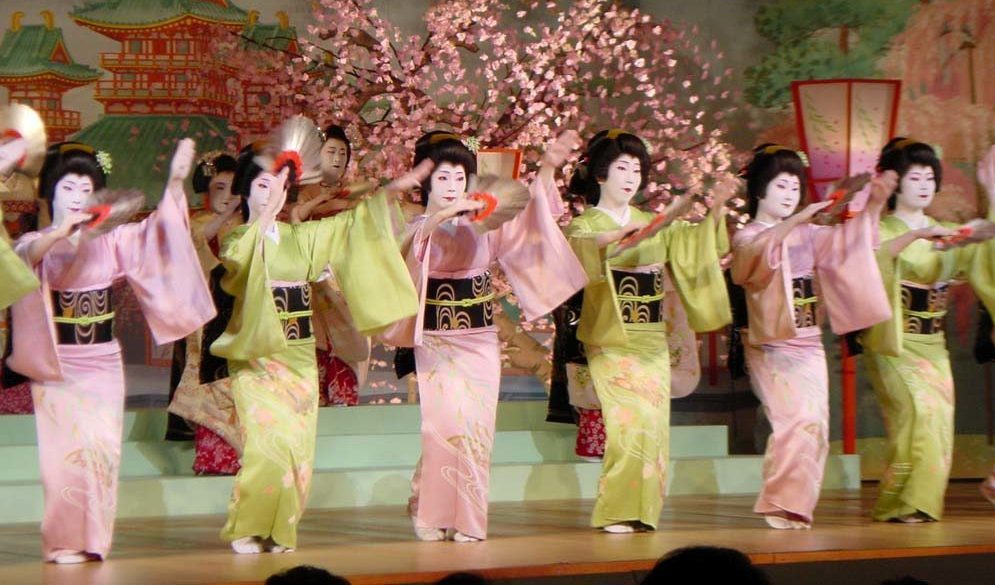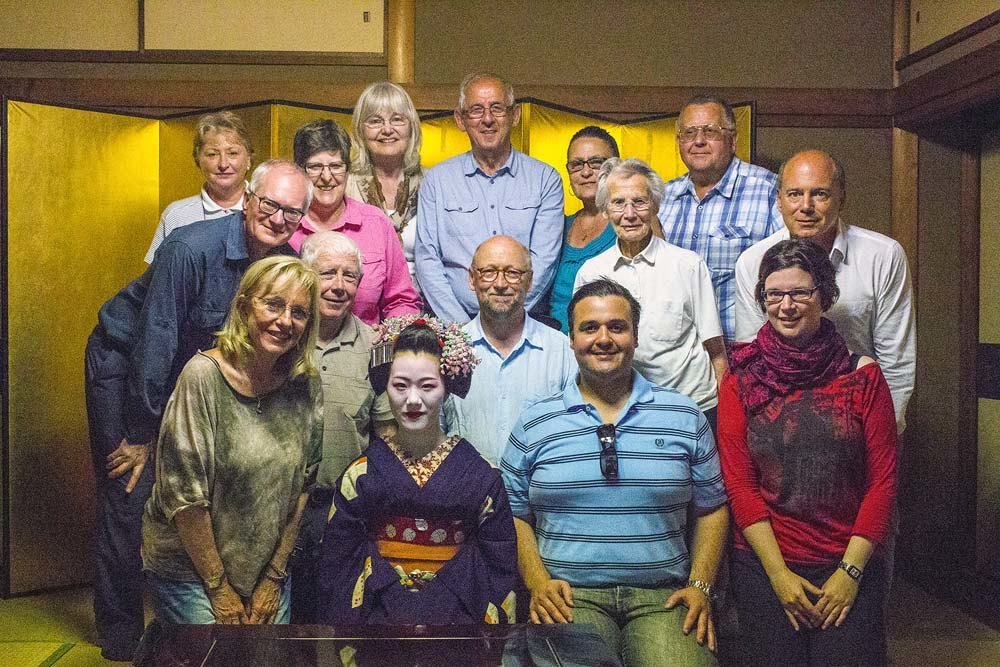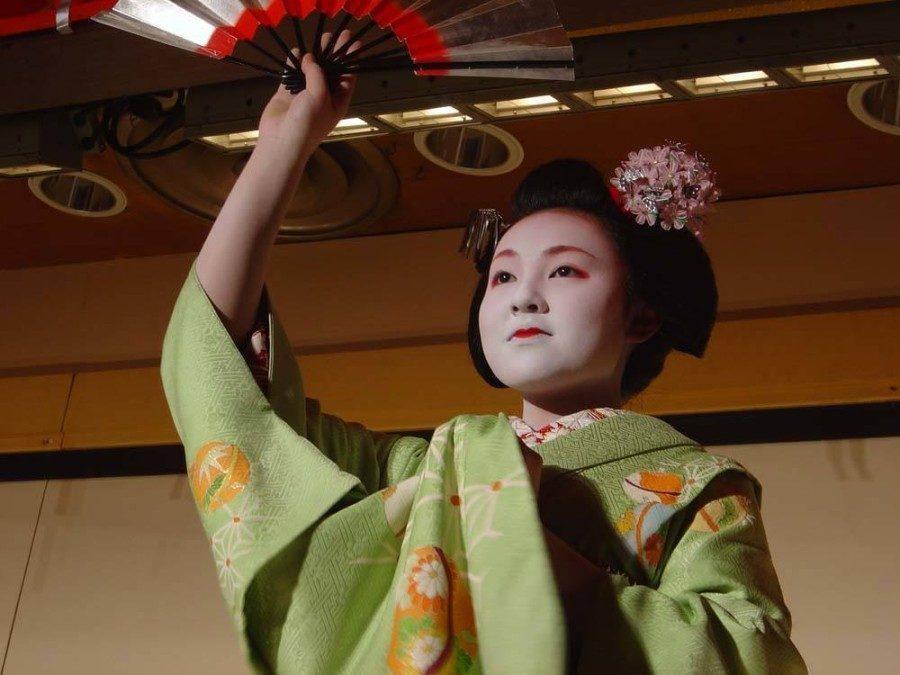Like this post? Help us by sharing it!
The world of the Japanese geisha is shrouded in myth, mystery, and misconception. Though nearly everybody will recognise their distinctive make-up, hairstyles, and elaborate kimono, surprisingly few people really understand the role of the geisha in Japanese society.
What is a geisha?
A geisha is a hostess trained in conversation and the traditional arts – such as dance, classical music, calligraphy, and poetry. She is usually hired to attend parties, where she will joke, play games, and generally interact with the (traditionally male) attendees, before performing traditional dances to the strains of a shamisen (stringed instrument). The term “geisha” literally translates as “entertainer” – and that is exactly what geisha are.
In addition to their role as entertainers, geisha have increasingly taken on an additional role – arguably more important – as custodians of traditional culture and skills. Their culture is one of the final bastions of pre-industrial Japanese culture; an enclave in which traditional values are preserved for posterity.
The history of geisha
Geisha have their roots in the pleasure quarters of ancient Japan. Perhaps their earliest forerunner was the saburuko girl, who began selling her services as entertainer and hostess as early as the late seventh century. Later, with the development of court culture at Heian-kyo (modern-day Kyoto), skilled performers began to thrive. Designated pleasure quarters were filled with characters such as tayuu (prostitutes who were also skilled at acting and the traditional arts) and odoriko (chaste, teenage dancers-for-hire) – both precursors of the modern geisha.
The first performers to call themselves geisha were actually men, whose job it was to entertain clients as they waited to visit popular courtesans in the pleasure quarters. Women began performing the role in the 1750s, but by 1800 it was an almost exclusively female occupation – and the role of the geisha as we know it today had roughly taken shape.
Throughout the 19th century geisha enjoyed a golden age of popularity, and their reputation as profoundly elegant, remote and mysterious was cemented. Their world suffered a massive decline during WWII, when teahouses, bars and okiya (geisha houses) closed their doors and women were expected to pitch in with the war effort. Though few women returned to this way of life after the war, those who did fostered improved rights for their profession, and there was something of a renaissance of geisha culture during the economic boom of the 1960s.

The life of a geisha: then and now
Being a geisha is not simply a profession; it is a way of life. An artist doesn’t take her make-up off at the end of the day and cease to be a geisha – she lives in a world distinct from that of her peers, keeping to a way of life that seems frozen in time. Thankfully, however, not everything in their world has remained unchanged.
In the past, it was not uncommon for girls to be sold into service as young as four years old, bonded to their okiya and forced to work. This is, of course, no longer the case. Modern education and labour laws mean that today’s artists begin their training in their late teens, or even early adulthood. Marriage no longer means retirement, as it once did, and self-sufficient performers are allowed to live independently rather than passing their lives at an okiya.
Meanwhile, other things have not changed much for centuries. During training, each maiko (trainee) is attached to an oneesan (older sister) – a fully-fledged artist who will act as her mentor until she too becomes qualified. Maiko training can last for years, and consists of three elements: training in the formal arts, practise in conversation and entertainment, and networking – navigating the complex society of the hanamachi (geisha district).
Today’s geisha spend their time much as their predecessors always have, splitting their day between training and appointments with clients at parties and teahouses. The only thing that has changed is their clientele – many of whom are tourists hoping for a glimpse of their “flower and willow world”.
Clothing and appearance
The stereotypical image of a woman with white make-up, elaborate hairstyle, and ornate kimono is not an image of geisha at all. This lavish style is actually typical of maiko, or trainee. By contrast, fully fledged performers will generally wear subdued colours and minimal make-up; they dazzle with their skills and personality, not with their elaborate clothing.
You can instantly tell a maiko by the colour of her collar: red for maiko, white for geisha.

Are geisha courtesans?
In a word: no. These women are not prostitutes, though many people still believe them to be. One of the sources of this misconception comes from World War II, when courtesans would doll themselves up as “geisha girls” and solicit amongst American GIs.
This is not the only source of confusion. In fact, the worlds of geisha and courtesans have been closely intertwined since the profession’s inception. The earliest geisha were often (though not always) prostitutes, and one only began to diverge from the other in the latter half of the 18th century. In her book Do They or Don’t They? the anthropologist and geisha expert Liza Dalby explains that before the war, it was still common for a trainee’s virginity to be auctioned off to the highest bidder (a custom called mizuage). Following the war, this practice was largely left behind, and has little or no part in the modern world.
Geisha and feminism
Though they are often portrayed as submissive and subservient to their male clients, the geisha world has historically offered women the opportunity for increased autonomy and economic independence – something they could never hope for in any other profession. Performers were taught to manipulate their clients with their wits, and thus enjoyed an unprecedented position of power in traditional Japanese society.
Though women in Japan today have many more opportunities than they did even a few decades ago, the profession of geisha is still seen by some as a way for a woman to express her independence and liberate herself from societal pressures – such as the expectation to get married and start a family. Some feminists disagree with this interpretation, however, and continue to view their world as exploitative and backward.

Where can geisha be found today?
They were once widespread across Japan, but today there are just a handful of hanamachi. Kyoto has the largest population, with five active hanamachi, while Tokyo and Kanazawa have smaller populations.
The geisha world has had to diversify to survive, which means that it is now possible for tourists to meet a maiko face to face. Though they are most often hired to entertain well-heeled clients at exclusive parties, the easiest way for an outsider to see one of the artists in action is to buy a ticket for the spring dances, or Miyako Odori: a yearly performance of traditional music and dance in Kyoto that any paying guest may attend. Another option is to reserve a private audience with a maiko, during which you will be able to chat through a translator and be entertained with traditional games and dances. Expect to spend a pretty penny, as their training doesn’t come cheap!
InsideJapan Tours can arrange a Gion walking tour, tickets to the spring dances, or a private audience with a maiko as part of a longer holiday. Get in touch to find out more!


